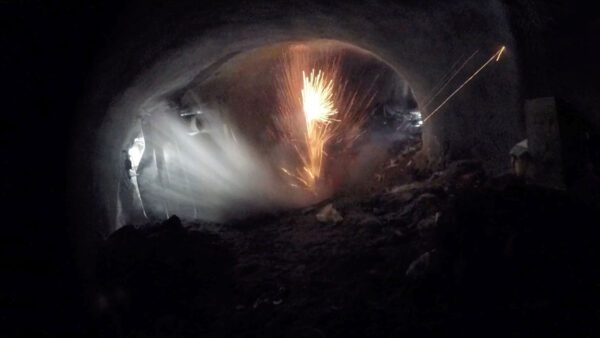Structural engineer Arup has discovered faults in the cladding of a hospital Carillion was building in Liverpool, and the cost of fixing it may scupper the private-finance deal originally agreed to get it built.
The trust that commissioned the £335m Royal Liverpool University Hospital (RLUH) today revealed that Carillion’s assurances that the cladding was sound had proved untrue upon Arup’s inspection.
Now the way forward is not clear for the client, Royal Liverpool and Broadgreen University Hospitals NHS Trust.
It sees continuing with the private-finance deal as the quickest way of finishing the hospital (pictured), which was nearing completion when work halted amid Carillion’s collapse in January.
But although the financiers, which are the European Investment Bank (EIB) and Legal & General pensions (L&G), have already been prepared to invest “significant additional funding” to get the hospital finished, as the trust said, they may balk at the extra costs now needed to rectify the cladding problems.
“There has been added complexity in reaching an estimate of the costs to complete the new Royal, as a result of remedial work required to correct faults created by Carillion,” the trust said today.
If EIB and L&G are not willing to pay more, the trust would have to ask the UK government to fund construction, moving the project out of the private-finance arena. That would delay the project further.
“If the [private-finance] contract was terminated, we would need to engage the lenders in complex discussions regarding the status of their investment,” the trust said. “These discussions would need to be resolved before a new contract to complete the hospital could be agreed.”
Another of Carillion’s hospitals, the Midland Metropolitan in Smethwick, moved from a private-finance contract to direct government funding earlier this year, but the trust said RLUH was a different scenario.
Midland Metro “was in its early stages and it proved impossible to reach an agreed rescue package with their funders”, the trust said. “A taxpayer funded solution was therefore the best value option to getting the hospital completed.”
RLUH was meant to be handed over to the trust at the end of this month, according to the original project agreement.
Serious cracks in concrete beams discovered in 2016 added to delays.
The trust appears to hope EIB and L&G stay on board. “This type of infrastructure investment is what the EIB was set up for and what Legal and General pension schemes most often support,” it said.
Its board will meet to discuss “all their options” later this month, the trust said.
Arup had been engaged over recent months to identify the work needed to complete the RLUH, and Arup found faults in the structure and cladding.
Even before Carillion went into liquidation the trust sought assurances from Carillion about the cladding.
According to the trust, Carillion had said: “There are a number of different cladding systems utilised on the Royal Liverpool University Hospital all of which have been specified and installed to meet the required standards of fire safety….The new hospital has been designed to comply with the requirements of HTM05-02 Firecode – Fire Safety in the design of healthcare premises.”
However, Arup’s review found this not to be the case with some parts of the cladding.
Meanwhile, the trust said it is coping as best it can in the old Royal Liverpool.
“While we remain in the current Royal, we continue to carry out both emergency and planned maintenance (across all our hospitals) to ensure that patients are treated in a safe environment,” it said. “So whilst the current building does not provide the high quality environment we all want for our patients, we do invest in and work extremely hard to ensure that it is safe.”
Photograph: The new buildings of the Royal Liverpool University Hospital in October 2017 (Rodhullandemu/Wikimedia Commons)










